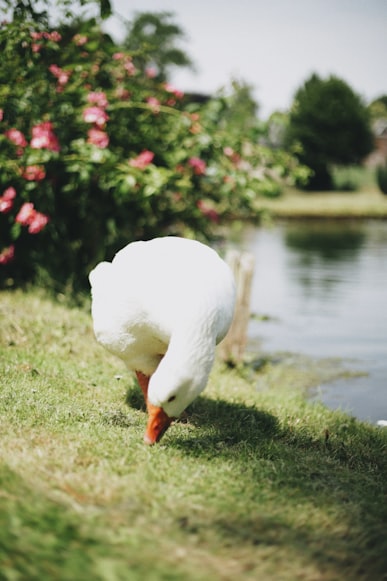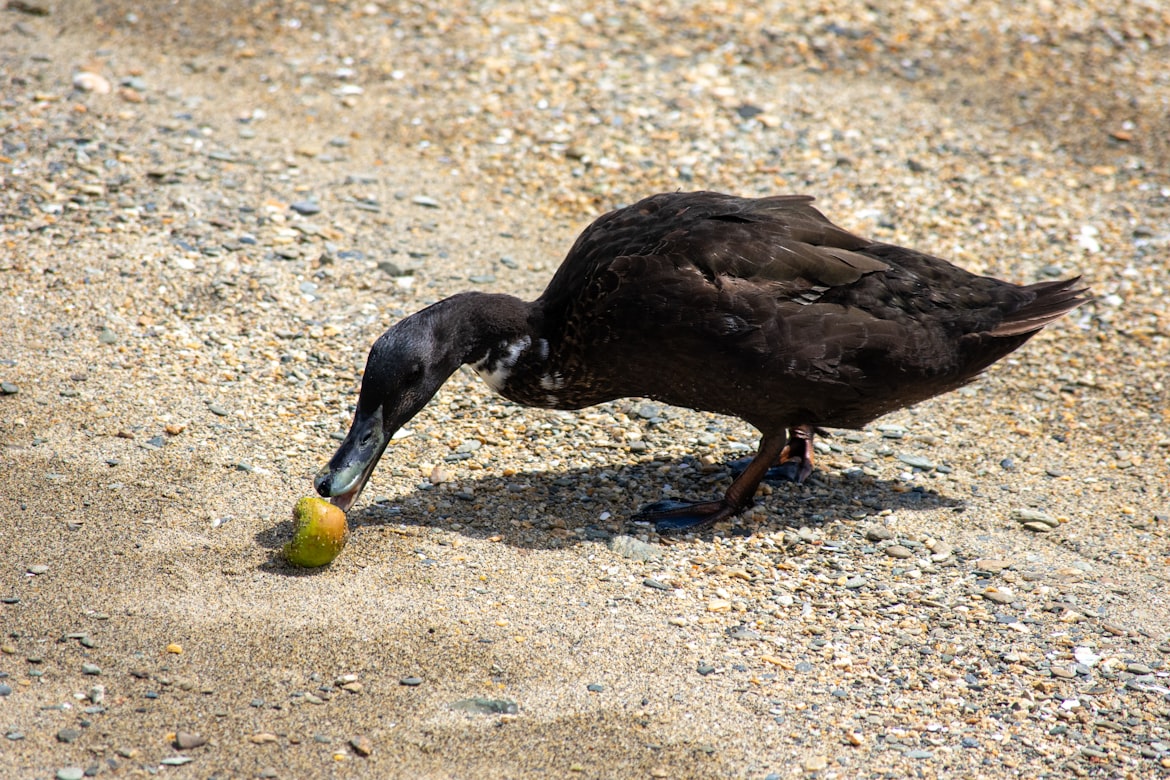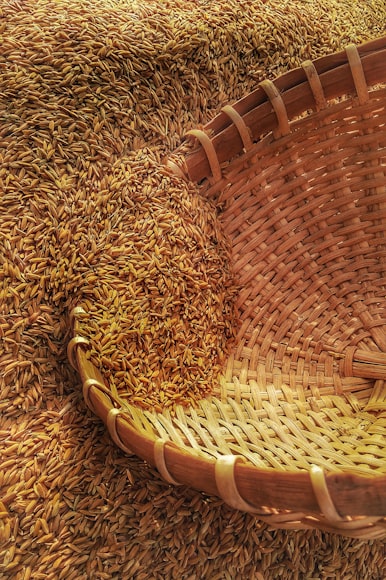What Do I Feed Baby Ducklings
As an Amazon Associate I earn from qualifying purchases.
What Do Baby Ducklings Eat?

Ducks are birds belonging to the Anatidae family, which also includes swans, geese, and seabirds such as gannets. Ducks of many different types are bred for food, eggs, or even companionship! Most of us have fed wild ducks at some point in our lives, but did we do it correctly?
All baby ducklings have a built-in desire to find food. Because they will consume anything they can discover, their diet is referred to as omnivorous. Read on to learn more about ducks and their particular nutritional requirements, whether you own a pet duck or are wondering how to feed the ducks in your neighborhood pond.
What Do Baby Ducklings Eat?

Ducks are omnivores that will eat just about anything they can get their beaks on. It's typical to spot adult ducks consuming a variety of grasses, water plants, fish, insects, worms, amphibians, and tiny mollusks in their natural environment. The particularity of this diet is determined by the duck's usual habitat.
Ducks that live in the woods, for example, will consume whatever they can find there. The majority of these ducks' diet is made up of nuts, fruits, and grasses since this is what's most readily accessible to them. Ducks that stay submerged will consume the tiny animals that live in or around this aquatic vegetation.
One of the most essential aspects of ensuring that your new ducks have a successful beginning is providing them with a healthy diet. Fortunately, it's not difficult. The five components of a healthy, balanced duckling diet, as well as ten products to avoid giving them with, how much to offer them, and some further information are all outlined.

Commercial Feed
The majority of your ducks' diet should be commercial feed for the duration of their life. The best diet for a duckling is waterfowl feed, such as Purina Flock Raiser. In certain regions, especially made waterfowl feed is difficult to come by, so you'll have to substitute with chick food.
Starter and grower feed are the two distinct variants of feed for baby ducklings or chicks. The starter is known to have greater levels of protein compared to its lower counterpart. After the first two to three weeks, ducklings should be fed with a starter diet before being switched to a grower diet. It's best not to give a starter for more than two or three weeks since it might cause angel wing in the ducks.
Ducklings' favorite form of feed crumbles. Mash is acceptable, but moistening it will prevent them from choking on the loose powder. Pellets are typically too big for tiny ducklings to chew.
Niacin
Chicks and ducklings require similar diets, so duckling food is suitable for them except for niacin, or vitamin B3. Ducks need more niacin than chickens do, so if you give them chick starters, you'll have to add niacin to the mix. Niacin insufficiencies can occur if you don't do this. Brewer's yeast may be fed to your pig at a rate of 1/2 cup brewer's yeast per 10 pounds of feed to ensure that they receive adequate niacin.
Greens

Give your ducklings some different food. If the weather and circumstances permit, allow them to go outside so they may discover grass of their own in a secure, protected area, or at the very least under supervision. Bring them some chopped-up grass and weed clippings to play with if you can't take them outside or do it rarely.
You can offer them chunks of fruits and veggies. You'll have to chop them into tiny pieces at first when they're small because they won't be able to chew. Peas, tomatoes, cucumbers, watermelon, strawberries, cabbage, and lettuce are all popular dishes for hamsters.
Greens should not be the entire diet. Grains, alone, should not be the majority of your food. Veggies and fruits on their own do not constitute a balanced diet. If you feed them too much of either one, your ducklings might develop protein shortages or other difficulties.
What Do Baby Ducklings Eat in The Wild?

Ducklings are born alive and then stay near to their mother in the wild. She directs them to an area where they can find food and water.
Baby ducks eat anything from grubs and insects to algae and vegetation, which is why they are referred to as "everybody's friend." They may feed in the sunshine in mild weather. However, because their food congeals as winter approaches in colder areas, they must stay near water.
During the winter, they consume a lot of weeds and grass, which can make them uncomfortable to digest due to their fullness. This can be hazardous since their stomachs won't stretch as they start feeding on different foods. Their diets expand to include more insects and even tiny fish as they mature.
How Often Do Baby Ducklings Eat?

Ducklings can eat chick food of any brand. Check to see if it's medicated because ducklings consume more calories than chicks and there's a danger they'll overdose.
Baby Ducklings, on the other hand, require more niacin than chicks and benefit from Brewer's yeast sprinkled over their food to aid in the formation of strong bones. Oats can be slowly added to the diet of newly hatched ducks until a 25% oats to 75% feed mix is achieved. Grit in the form of commercial duck grit or coarse dirt must also be supplied to aid digestion.
Ducklings enjoy a variety of nutritious snacks, including dandelion greens, weeds, chopped grass, worms, kale, swiss chard, moistened oats, and peas. Ducks dislike wilted or stepped-on vegetation and so it's preferable to throw the goodies straight into their water dish for them to pick up with their bills.

Ducklings eat by grasping a bill full of food in their beak and then dunking it in water to moisten and swallow it. Their feed will become wet, therefore it should be discarded on a regular basis. Mold and germs can grow in the damp feed, especially in the brooder's warm environment.
For feed, a terracotta planter base is convenient. The porous material absorbs moisture from the food and makes it seem to stay drier. It's also a good idea to put their feed under the heat lamp, where the warmth will help it dry out a little. Ducklings require continuous feeding and water.
Once they are approximately two months old and presumably living outside, you may stop feeding them at night if you like. It's sufficient to leave only water; leaving feed out without water is not acceptable. They must have access to water at all times or they could end up choking.
A week-old duckling consumes about a gallon of water every seven days. Ducklings consume half a gallon of water each day by the age of seven weeks, so keep an eye on their drinking supply.
What Are The Natural Predators of Baby Ducklings?
Ducks are a large family of birds that also includes swans and geese. These birds may be found throughout the world, although they are often known as waterfowl. They like to live near or around bodies of water, such as ponds and lakes. Birds that live on oceanic islands, on the other hand, are referred to as ocean
Ducks are usually laid-back creatures unless their young are endangered. Humans have domesticated ducks since they were valued for the eggs and feathers they provided.
While these birds are quite beautiful, although they can also be dangerous. Because of their low profile in the wild, however, they are vulnerable to the advances of more aggressive and powerful predators. Here is a list of waterfowl-hunting predators.
Red Fox
The red fox is a distinctive land-dwelling mammal that has lived in the Northern Hemisphere for millennia and is widely regarded as the most essential fur-bearing animal during that time. These animals, belonging to the family Canidae, have a distinctive crimson mane that many other species fear.
The red fox is the most common predator of ducks. Red foxes are frequently seen watching a flock of ducks feed. They can even be so vicious as to go after duck nests on their own.
The red fox's greater sense of smell and hearing help it to successfully pursue ducks as food. It can track duck noises precisely and pounce on its unsuspecting victims when the chance arises. The duck eggs, which they steal as future food, are a bonus in their hunt.
Badgers
Badgers are omnivores that can consume everything from birds to earthworms, small mammals, and insects. Their remarkable capacity to dig and hunt underground gives them a tactical edge over their prey.
Badgers are known to prey on ducks, especially the eggs. A badger's sharp claws and powerful limbs allow it to capture unsuspecting ducks and dispatch them quickly. If you see a mother badger with her cubs, she might be eating the eggs. Badgers are known to consume their prey on the spot, and if they happen upon a duck nest, the eggs are one of their favorite meals.
Raccoons
Raccoons are a species of mammal that dwells on land and belong to the Procyonidae family. These animals are most often seen in North America, where they like to call forests home.
Raccoons are considered omnivores by many experts, with a diet that includes a mix of plants, small invertebrates, and vertebrates. These animals may also be killed if their hunting patterns place them in the path of a duck's nest due to their insatiable hunger.
Raccoons are fierce predators of ducks, with strong teeth and claws. A powerful bite to the neck can immobilize a duck, allowing raccoons to feed on it without resistance. Raccoons may now plunder the eggs from the nest after overpowering the duck with a single bite over the neck.
Minks
Mink are tiny semi-aquatic mammals that dwell near water and feed on insects, fish, and other animals. They like to go stream and ditch in search of food. They are natural hunters who prey on a variety of species including aquatic life, small animals, and even birds.
Mink is a type of wildcat that is quite quick and agile when it comes to moving underwater via its distinct trunk actions. To remain submerged for longer periods of time in order to catch fish and other aquatic creatures, they have flexible respiratory systems.
The mink is a vicious predator for ducks, despite their small and mild appearance. The mink prefers to hunt ducks in the water, aiming for their necks with their strong bite. Their long canines go deep into the head or neck of the ducks to immobilize them. After subduing the ducks, the mink drowns them before finishing them off.
Corvid
Corvids are a family of birds that includes ravens, crows, magpies, and other birds with similar features. These are usually black-feathered birds with a high degree of intellect and inclination for hunting in teams.
The crow was thought to be one of the most dangerous bird predators for ducks in general, among these birds. They now perceive the raven to be a greater hazard than the crow because of its sociable nature.
From a high vantage point, corvid birds are powerful predators of ducklings and duck nests. They swoop down on the young ducks, piercing them with their needle-like bills. The eggs in unprotected nests are quickly plundered by the corvid species.
Snapping Turtles
Although the snapping turtle is a large freshwater turtle belonging to the Chelydridae family, it is perhaps the most perplexing animal on this list. These reptiles are known for their aggressive tendencies when trekking across the land.
The devastating sharpness of their teeth, as well as the power of their jaws, gives them a fearless nature. They are named for the strength of their jaws, which resemble a bird's beak on a long and mobile neck. Its jaws may produce a significant biting force capable of capturing any unsuspecting prey.
Snapping turtles may attack ducks while they are in the water. A forgetful duck might come within the snapping turtle's biting range. This predator of ducks can clamp down its jaws on the duck's neck before it knows what's happening, making it an easy meal for this predator of ducks.
Bobcats
The bobcat is a North American cat with a short bobtail that prefers to live in forested areas. Bobcats are solitary animals who prefer to stay within territories that they've established for themselves.
The bobcat is a skilled stealth predator, which means it does well at waiting for the ideal chance to pounce on its prey. They prefer to hunt waterfowl around bodies of water where they congregate.
Bobcats will lurk behind cover and wait for unsuspecting ducks to get within striking distance before pouncing. It scores a deadly neck bite by digging its claws into the duck's body and then getting in a powerful bite to the neck. The bobcat is back at it again, hunting for new prey after finishing off its current meal.
Amazon and the Amazon logo are trademarks of Amazon.com, Inc, or its affiliates.
Source: https://feedingnature.com/what-do-baby-ducklings-eat/
0 Response to "What Do I Feed Baby Ducklings"
Post a Comment